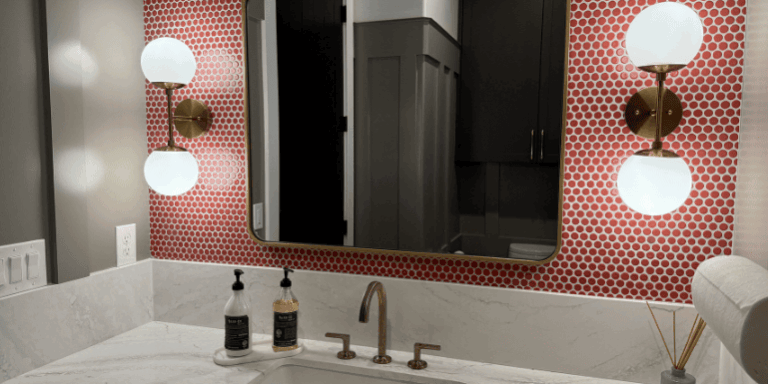Introduction: Why Planning Matters
You’ve finally decided to renovate your bathroom. Maybe the grout’s crumbling, the layout’s outdated, or the shower just isn’t cutting it anymore. But where do you start?
Bathroom renovations aren’t just about picking pretty tile. In Utah, they involve permits, inspections, material sourcing, weather considerations, and realistic timelines. If you don’t plan properly, it’s easy to go over budget, get stuck in a permit delay, or live without a working toilet for longer than you expected.
This guide walks you through every major step to plan your Utah bathroom remodel like a professional — from budgeting and material selection to permits, scheduling, and contractor coordination.
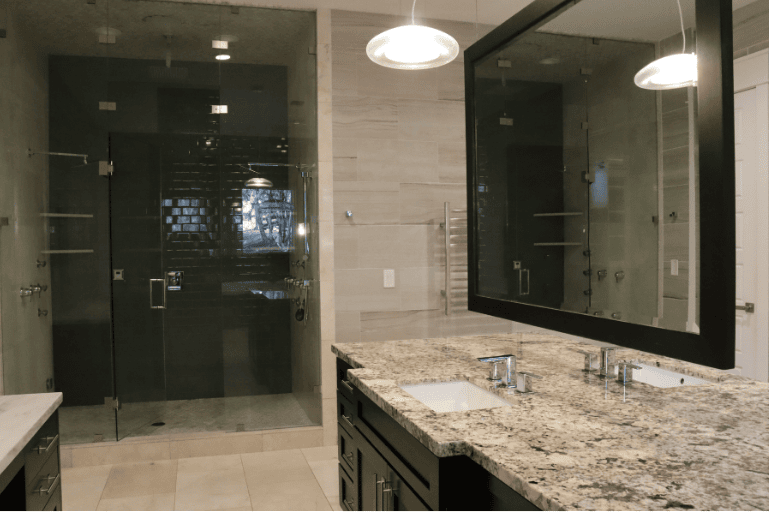
Step 1: Define Your Budget and Scope
Before calling a contractor or heading to a tile showroom, you need to know two things:
-
How much you’re willing to spend
-
What you want to achieve
Start by deciding on your remodel type:
Common Bathroom Remodel Types in Utah:
| Remodel Type | Budget Range | What’s Included |
|---|---|---|
| Cosmetic Refresh | $10K – $18K | Paint, lighting, faucet/vanity swaps |
| Mid-Range Remodel | $18K – $30K | Tile, new tub/shower, updated fixtures |
| Full Gut Renovation | $30K – $50K+ | Full layout change, plumbing, high-end tile |
| Spa-Luxury Remodel | $50K – $75K+ | Heated floors, custom showers, top finishes |
Budget Tips:
-
Add 10–15% as a buffer for surprises
-
Don’t forget permit, demo, or haul-away costs
-
Set priorities: What must be upgraded vs. what can wait
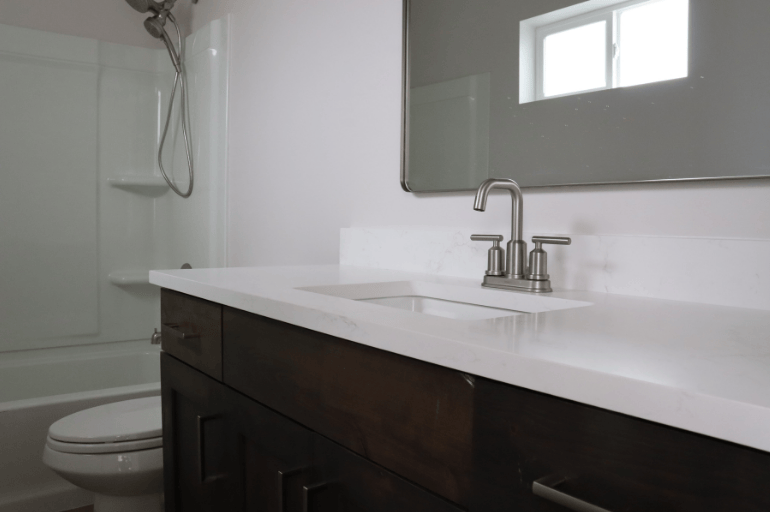
Step 2: Understand Utah’s Permit Requirements
Most Utah cities require permits for bathroom remodels that include plumbing, electrical, or structural changes. Don’t skip this part — it protects your home’s value and keeps everything legal.
When You Need a Permit:
-
Moving plumbing or electrical lines
-
Installing a new tub, toilet, or vanity with rerouted water
-
Adding heated floors or lighting circuits
-
Reconfiguring walls, doors, or windows
When You Might Not Need a Permit:
-
Replacing tile or paint
-
Swapping a faucet or toilet without changing locations
-
Cosmetic updates only
Utah Cities with Permit Nuances:
-
Salt Lake City: Inspection-heavy — expect 2–3 site visits
-
Lehi & Highland: Quicker processes, but require licensed trades
-
Park City: Strict insulation and waterproofing requirements
At Pro-Worx, we handle all permits and inspections for you. We deal with the city, so you don’t have to.
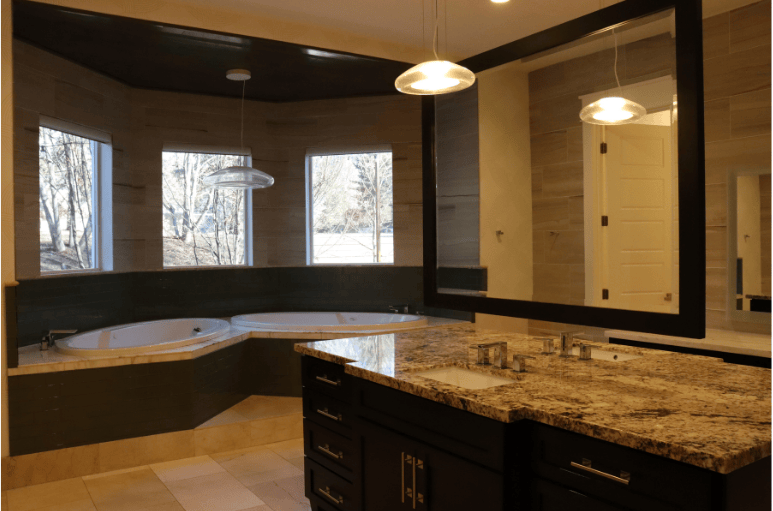
Step 3: Choose Materials That Work for Utah Homes
Utah’s climate swings from dry heat in the summer to snow-packed winters, so your bathroom materials need to do more than look good — they need to perform. From homes in Park City’s mountain air to basements in Sandy and Draper where moisture is a concern, smart material selection makes the difference between a remodel that lasts and one that falls apart fast.
Smart Material Choices for Utah Bathrooms
Tile
-
Go for porcelain or ceramic — they’re durable, easy to clean, and handle temperature shifts well.
-
Natural stone like slate or travertine can work beautifully, but must be properly sealed and maintained to prevent staining or water damage.
-
Avoid cheap peel-and-stick vinyl or laminate tile in humid or below-grade spaces like basements — they’ll lift, bubble, or mold within a year.
Vanities
-
Look for solid wood or MDF with water-resistant finishes. These stand up to steam, splashes, and cleaning products.
-
Particle board cabinets are cheap but not suited for long-term use — especially in homes without strong bathroom ventilation.
-
Consider floating vanities for a modern look that also improves airflow and cleaning access underneath.
Countertops
-
Quartz is king in Utah homes — scratch-resistant, stain-resistant, and low-maintenance.
-
Granite is also durable but requires regular sealing.
-
Avoid marble unless you’re committed to maintenance — it scratches, stains, and etches easily.
Fixtures
-
Brushed brass, matte black, and champagne bronze are big in 2025. They hold up well in high-use bathrooms while adding personality.
-
Stick with reputable brands (Moen, Kohler, Delta) to avoid leaks, inconsistent pressure, or finishes that flake.
Paint
-
Always choose moisture-resistant paint — especially for bathrooms with showers, poor ventilation, or basement locations.
-
Satin or semi-gloss finishes help resist mildew and make cleaning easier.
Grout & Sealants
-
Use epoxy grout for shower walls and floors — it’s more resistant to water and staining than traditional grout.
-
Silicone-based caulking is a must for corners, tubs, and around fixtures to prevent leaks and mold buildup.
Bonus Tip: Use Rebate-Eligible, Energy-Saving Materials
Many Utah homeowners now opt for eco-friendly products that qualify for local or federal incentives, including:
-
Low-flow toilets that reduce water bills and meet WaterSense standards
-
LED lighting and motion sensors for energy savings
-
Smart shower systems that reduce waste and monitor water temperature
-
Insulated tubs and tankless water heaters that improve heating efficiency
Choosing smarter materials not only boosts durability and performance — it also lowers your utility bills and increases long-term value.
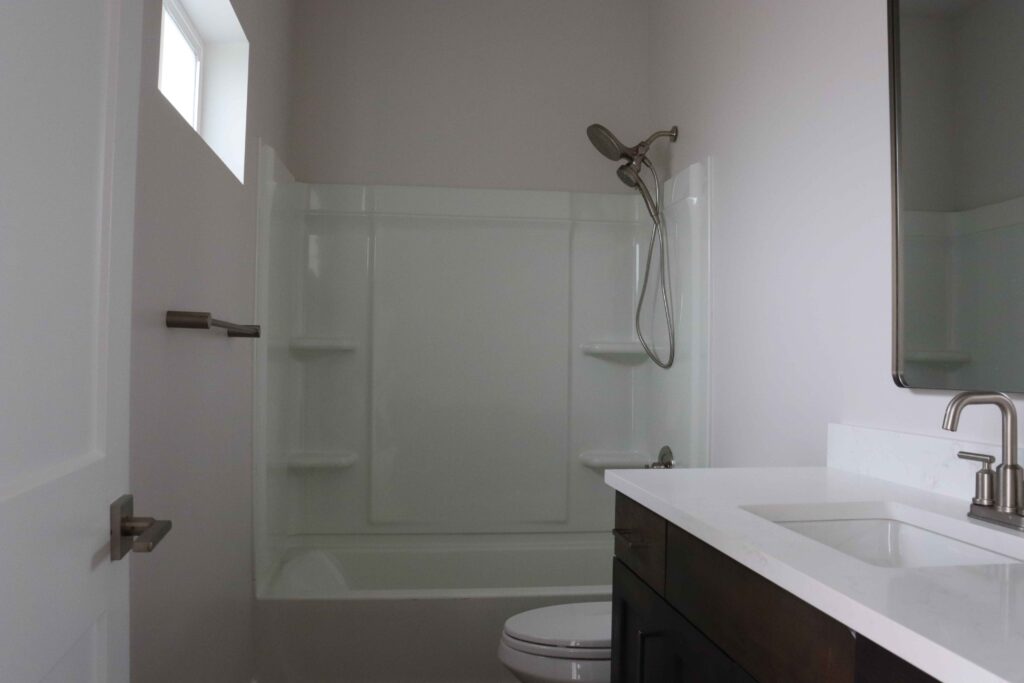
Step 4: Build a Realistic Timeline
A solid timeline is just as important as a solid budget. Most bathroom remodels don’t fall apart because someone picked the wrong tile — they fall apart because the electrician was scheduled before the inspector, the tile showed up late, or the vanity was stuck in a warehouse in California.
You need to know what happens, when, and in what order.
Typical Utah Bathroom Remodel Timelines (2025)
| Project Scope | Estimated Duration | Includes |
|---|---|---|
| Cosmetic Upgrades | 1–2 weeks | Paint, fixtures, lighting, hardware, surfaces |
| Mid-Range Remodel | 3–5 weeks | Tile, tub/shower swap, new vanity & flooring |
| Full Renovation | 6–8 weeks | Gut, layout changes, new plumbing & electrical |
| Permit + Inspection Time | Add 1–2 weeks | City approvals, rough and final inspections |
| Custom Orders/Materials | Can add 2–4 weeks lead | Vanities, tile, shower glass, specialty fixtures |
Many homeowners underestimate just how long product lead times and inspections can delay their project. Even simple projects can stall if just one delivery is late or a trade falls out of sequence.
Common Timeline Killers (and How to Avoid Them)
Custom materials with long lead times
-
Tile, vanities, and shower doors can take 2–6 weeks
-
Order these before demolition begins
Permit delays
-
Utah cities vary: Salt Lake City can take longer, while Draper and Highland may move faster
-
Pro-Worx files early to stay ahead of delays
Hidden issues
-
Mold, outdated plumbing, or DIY disasters behind walls can slow everything down
-
We do a full walkthrough and inspection before quoting to catch these early
Trade overlap or gaps
-
Plumber waits on electrician
-
Tile guy arrives before waterproofing is done
-
No one books the final inspection
How Pro-Worx Keeps Your Project on Track
-
Every project gets a day-by-day schedule upfront
-
We coordinate all trades internally, so you’re not chasing five different contractors
-
We build buffer time into the schedule to account for surprises
-
You get regular progress updates so there are no surprises or ghosting
Most delays are preventable. The right plan saves time, stress, and money — and gets you back into your bathroom faster.
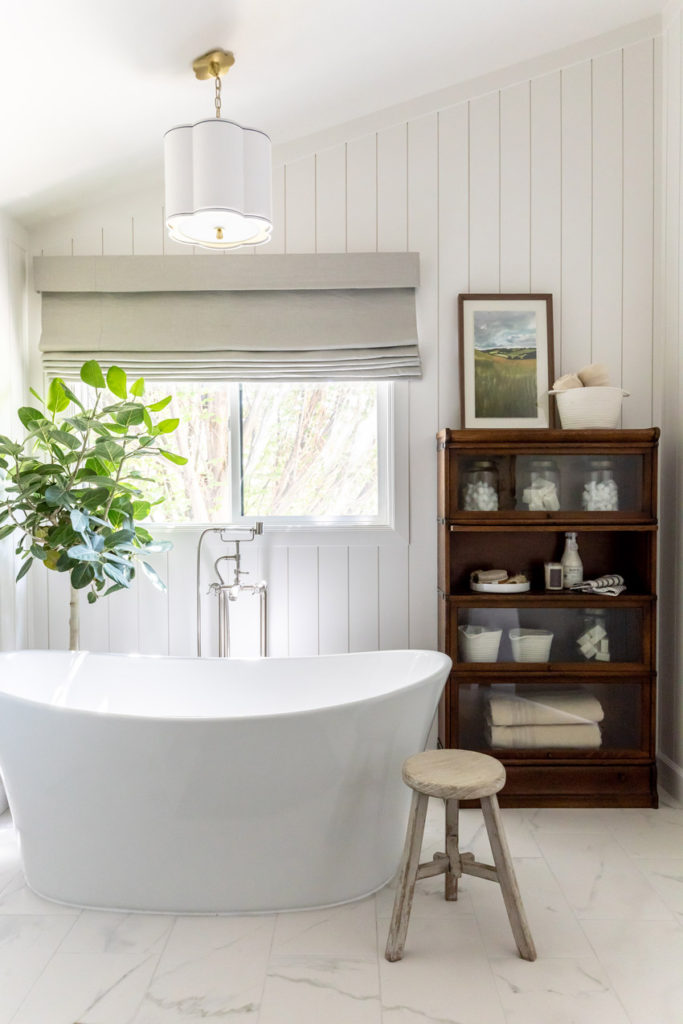
Step 5: Hire the Right Contractor
This is where most Utah bathroom remodels go sideways — and fast.
Hiring a neighbor’s cousin who “used to do tile” or choosing the lowest bid might seem like a smart way to save money. But it usually ends in:
-
Cost overruns halfway through the job
-
Long project delays while they “wait for a guy”
-
Patchy workmanship that hurts resale value
-
Failed inspections that need rework
-
And worst of all — a half-finished bathroom and no one answering your calls
What to Look for in a Utah Bathroom Remodeling Contractor
| Must-Have Qualities | Why It Matters |
|---|---|
| Licensed and insured in Utah | Protects you legally and financially |
| Bathroom-specific experience | Bathrooms are technical: waterproofing, plumbing, permits |
| Knowledge of local permitting | Avoids inspection fails and city red tape |
| Transparent pricing and estimates | No vague “ballpark” numbers or hourly surprises |
| Portfolio of real projects | Before-and-after photos show skill and style |
| Strong online reviews | Consistency and reliability matter — check Google, Houzz, etc. |
| In-house crews or vetted subcontractors | Keeps schedules tight and communication clear |
You’re trusting someone to tear apart and rebuild one of the most-used rooms in your home. Choose like it matters — because it does.
Red Flags to Avoid
-
No license or insurance
-
Cash-only pricing
-
No written contract or clear scope of work
-
“We can start tomorrow” — with no plans or timeline
-
Changing prices mid-project
-
Ghosting or excuses after deposits are paid
Good contractors are busy — but they’re also organized, responsive, and transparent. If it feels shady at the start, it only gets worse.
Why Utah Homeowners Choose Pro-Worx
At Pro-Worx Construction, we’ve remodeled hundreds of bathrooms across Northern Utah, and we’ve seen it all — including the messes left by other contractors.
When you work with us, you get:
-
A detailed quote and scope of work before we touch a single tile
-
Project managers who keep everything on track and on time
-
Licensed plumbers, electricians, and tile setters who actually show up
-
Honest guidance if something unexpected comes up — no panic, no blame
-
Clean-up crews and a final walk-through to make sure it’s perfect
And best of all — you don’t have to juggle designers, trades, inspectors, and permits. We do it all.
Check out our full blog on:
What to Look For in a Utah Bathroom Contractor
Common Delays and How to Avoid Them
Bathroom remodels don’t have to be a nightmare — but these are the potholes that trip up more Utah homeowners than you’d think. The good news? Almost all of them are avoidable with the right planning, clear communication, and a contractor who knows how to keep things moving.
Biggest Remodel Delays in Utah Bathrooms
-
Permits not submitted early enough
Many Utah cities (especially Salt Lake City, Park City, and Draper) have multi-step permit processes. Waiting until demo day to start the paperwork? That’s how you end up living without a toilet for a week longer than planned. -
Homeowners choosing materials too late
If your tile or vanity has a 4-week lead time, but demo starts Monday, you’re in trouble. Your contractor can’t finish the job without the materials showing up on time. -
Last-minute layout changes mid-project
Changing the location of the toilet or adding a second sink once framing is done? That means redoing plumbing, electrical, and possibly even permits. It’s not just inconvenient — it’s expensive. -
Long wait times for custom items
Custom glass shower enclosures, floating vanities, and imported tile can take 4–6+ weeks. If they’re not ordered before demo starts, you’ll have a half-finished bathroom while you wait. -
Hidden issues behind walls
Especially in older homes in places like Sugarhouse or Bountiful, we often uncover:-
Rotted subfloors
-
Outdated or unsafe plumbing
-
Uninsulated exterior walls
-
Mold from years of poor ventilation
These can add time and money — unless you plan ahead.
-
How to Prevent Remodel Delays
-
Finalize all materials before demolition begins
Pick out your tile, vanity, lighting, and fixtures before anyone swings a hammer. Lead times vary, and your timeline depends on everything being ready to go. -
Work with a contractor who handles permits upfront
Pro-Worx submits permits as part of your project prep — not as an afterthought. We factor city delays into the schedule so you’re not blindsided. -
Lock your layout early
Want to add a niche in the shower? Move the toilet? Great — but decide before framing and plumbing starts. Last-minute changes are a timeline killer. -
Ask for a real schedule — not a rough estimate
A professional contractor will give you a detailed plan: when demolition starts, when tile goes in, when inspection happens, when you can shower again. If all you get is “3 to 5 weeks,” press for more detail. -
Budget for at least one unexpected surprise
Plan 10–15% of your budget as a contingency. It might be mold, a hidden pipe, or a surprise inspection reschedule — but something always pops up. Expecting the unexpected is how you stay sane.
At Pro-Worx, we build padding into every schedule, pre-order materials before demo day, and communicate clearly so you’re never left guessing when your bathroom will be done.
FAQs About Planning a Bathroom Remodel in Utah
How much should I budget for a bathroom remodel in Utah?
Most projects fall between $18,000 and $40,000 depending on the size and scope. Add 10–15% for unexpected costs.
Do I need a permit for my remodel?
Yes — if you’re changing plumbing, wiring, or layout. Cosmetic-only updates usually don’t require one.
How long will it take to renovate my bathroom?
Most full remodels take 4–6 weeks. Complex projects or homes in high-permit cities may take 6–8 weeks.
When should I buy materials?
Before demo. Always order vanities, tile, and fixtures early — especially custom items.
Can I live at home during the remodel?
Yes. We work in phases to minimize disruption. For single-bath homes, we’ll help you plan temporary solutions.
Ready to Renovate Smarter?
At Pro-Worx Construction, we don’t just build great bathrooms — we help Utah homeowners plan them right from day one.
Let’s walk you through the budget, permits, materials, and timing that makes sense for your home — and your life.
Book your free consultation today and we’ll help you start your renovation with confidence.


